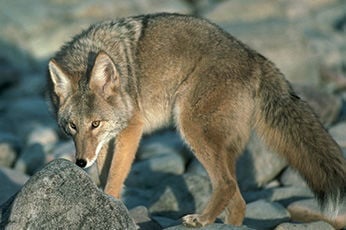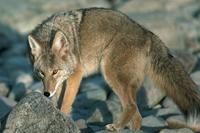HANFORD — Humans aren’t the only ones who get more active in the summer months, so is our canine neighbor — the coyote.
As the summer stretches on and their habitat gets dryer, life will get tougher for coyotes, which will cause an increase in activity at dawn and dusk, as they look for food, Associate Wildlife Biologist at California Department of Fish and Game Evan King said.
“They are commonly seen around urban areas. They typically don’t cause many issues outside of with backyard chickens and things like that. They generally eat small rodents and things like that,” he said.
Kings County Animal Control has received about half a dozen coyote-related calls in the last few months, which Kings County Animal Control outreach coordinator Samantha Yang said is slightly higher than average.
“If [the animal] is a safety hazard, we’ll go out there or if it’s injured, we’ll go out there,” Yang said.
King said that coyote sightings aren’t uncommon in the spring and summer months, as not only is that time of activity for the animal, but that the increase in sightings could be attributed to the fact that people tend to spend more of the summer months outdoors than normal.
“Kids are home for summer vacation, so they’ll see them or a teacher that’s home for summer vacation will see them in her backyard. It happens like that all the time.”
King said that last year’s rainfall produced good conditions for the animals coyotes prey upon like squirrels, rabbits and mice. Typically, the coyote population will increase in number a year or two after a boom in their prey population due to food sources becoming more abundant. This happens in subsequent years because coyotes reproduce slower than their prey.
“They trickle in behind because it takes a lot longer for coyote populations to get larger because they’re a larger animal,” King said. “They’re not like rodents that produce a large litter at one time.”
As a non-game species, it’s not a priority for the Fish & Wildlife Department to count coyotes or to keep tabs on the local population.
According to wilflife.ca.gov, coyotes are afraid of humans by nature, but feeding them, directly or indirectly can cause them to lose that fear, becoming potentially dangerous.
Here are some tips on from The California Department of Fish and Wildlife on how to take caution in coyote country.
- Never feed or attempt to tame coyotes. The result may be deadly conflicts with pets or livestock, or serious injuries to small children.
- Do not leave small children or pets outside unattended.
- Install motion-sensitive lighting around the house.
- Trim ground-level shrubbery to reduce hiding places.
- Be aware that coyotes are more active in the spring, when feeding and protecting their young.
- If followed by a coyote, make loud noises. If this fails, throw rocks in the animal’s direction.
- If a coyote attacks a person, immediately contact the nearest Department of Fish and Wildlife or law enforcement office.
- Put garbage in tightly closed containers that cannot be tipped over.










